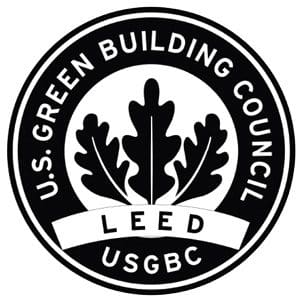
Build Green and Prove it: Sustainable Building in Costa Rica
Developed countries many years ago realized that as natural resources were used without control there had to be a way to create awareness of how to better preserve resources in a systematic way and introduce the general public to voluntary methodologies that would help owners and the environment.
Several professionals in the 1990s got together in the field of sustainability, initially creating a method in England that later was imitated in the United States and forming what is known today as the USGBC (United States Green Building Council). An outcome was the LEED standard (Leadership in Energy and Environmental Design) with a point system evaluation and targeting specific aspects of environmental compliance. This method resulted in four different levels of compliance — Baseline, Silver, Gold and Platinum — that are commonly used today worldwide.
The best way to find
the professional needed
is to consult with the local
architects and engineers.
In addition, there are other third party compliance methods that have driven the thirst of awareness to specific areas such as Energy Star, Green Globes, BOMA, EDGE (Excellence in Design for Greater Efficiencies) and many more.
Most recently Costa Rica has adopted a voluntary technical guide issued by the College of Architects and Engineers that resembles the EDGE methodology, an easy-to-follow local option for new construction. This guide targets measures for energy efficiency and water conservation.
 For most of these methodologies, professionals in the field had to take courses that led to examination and accreditation. Many of these methodologies are created for different approaches and mostly were designed for new construction. These professionals can suggest different design criteria in order to enhance performance, be it for energy efficiency, water efficiency, indoor air quality control or sustainable material use. An accredited professional can contribute greatly not only to the attempt of certifications available, but to your design based on a desire to intelligently return to the environment or simply to reduce actual maintenance long-term and short-term costs and returns.
For most of these methodologies, professionals in the field had to take courses that led to examination and accreditation. Many of these methodologies are created for different approaches and mostly were designed for new construction. These professionals can suggest different design criteria in order to enhance performance, be it for energy efficiency, water efficiency, indoor air quality control or sustainable material use. An accredited professional can contribute greatly not only to the attempt of certifications available, but to your design based on a desire to intelligently return to the environment or simply to reduce actual maintenance long-term and short-term costs and returns.
These methods of accreditation can be engaged with different professionals that will contribute to the information needed for the overall analysis of a project, be it for the energy consumption aspects, the water savings or the sustainable use of materials. Mechanical and electrical engineers as well as accredited general engineers and landscape architects, that are accredited can provide the proper advice for the approach needed. They can work independently or on a team and provide different design criteria aspects to the enhancement of a project.
The best way to find the professional needed is to consult with the local architects and engineers source or online under USGBC professionals to be able to obtain local listings or abroad. Professional fees for this type of approach can vary depending on the amount of involvement. If the owner seeks certification of a building the fees can increase based on the method that would be implemented. Each certification method requires an accredited professional, so the specific certification that is attempted should have the corresponding professional.
“EDGE empowers the discovery of technical solutions at the early design stage to reduce operational expenses and environmental impact. Based on the user’s information inputs and selection of green measures, EDGE reveals projected operational savings and reduced carbon emissions. This overall picture of performance helps to articulate a compelling business case for building green” — EDGE Building Methodology
Building Greener in Guanacaste
Picking the Right Windows
Swimming Pools, Design Construction and Maintenance
Know Before You Buy, The importance of Home inspection
From Dream to Reality
Picking your Dream Property
Storm Protection for Your Home
Roofing 101: Guanacaste Style
Guanacaste Tropical Hardwoods
Going with the flow: Rain Runoff and Erosion
Understanding Tico Plumbing

